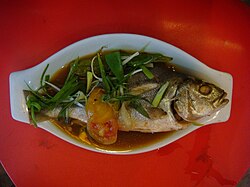| Nematalosa | |
|---|---|
 | |
| Nematalosa nasus | |
 | |
| Nematalosa come | |
| Scientific classification | |
| Domain: | Eukaryota |
| Kingdom: | Animalia |
| Phylum: | Chordata |
| Class: | Actinopterygii |
| Order: | Clupeiformes |
| Family: | Dorosomatidae |
| Genus: | Nematalosa Regan, 1917 |
| Type species | |
| Clupea nasus | |
Nematalosa is a genus of gizzard shads in the fish family Dorosomatidae. There are currently 11 recognized species. They are mainly found in Indo-Pacific.